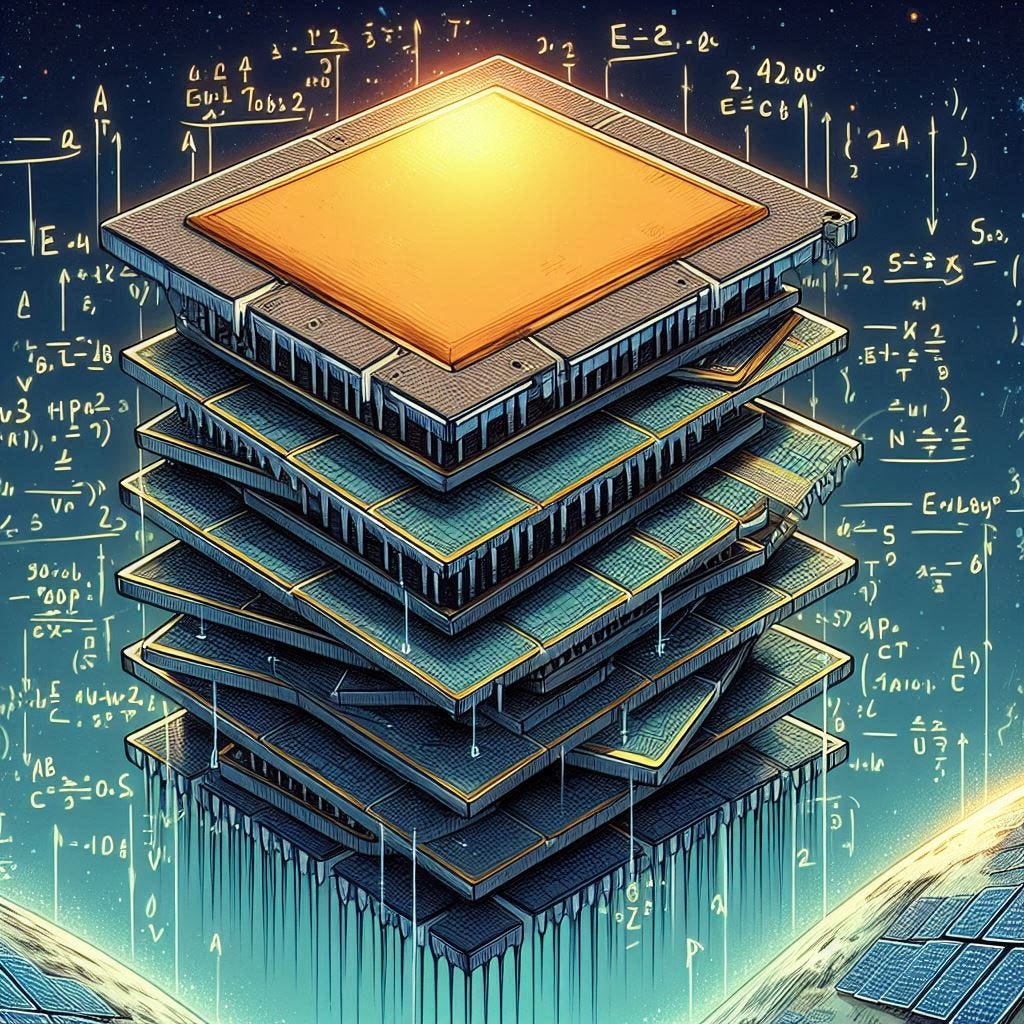Let the chips fall where they may
The Heartland University was abuzz that afternoon. While the sprawling Nebraska campus had been largely empty over the summer, one computer lab was full of eager grad students working on innovative research.
There was anticipation in the air as everyone crowded around Alex Wu, watching as he meticulously aligned transistors under a microscope. He had the steadiest hands of everyone in the lab, but even he felt uncomfortable with so many eyes upon him.
Finally, he leaned back in the chair. “Fourth layer aligned,” he announced.
Alex’s mentor, Dr. Shay Ropalan, peered at the circuitry through a magnifying lens.
“The network integration is complete,” she confirmed, her voice barely a whisper.
They had achieved the culmination of years of R&D — the assembly of a 4D stacked chip. This was a bold advancement upon standard 3D chips. Instead of simply layering transistors vertically, these incorporated a dimension of time into their operation. By dynamically reconfiguring the circuit connections in real-time, it could adapt to changing workloads, optimize power consumption, and achieve unprecedented computational capacity.
Dr. Reed sat at his workspace, observing the proceedings from his computer.
“Remember, this isn’t just about stacking transistors taller or more densely,” he reminded them. “This is about creating an entirely new paradigm in computing.”
Everyone in the lab nodded their heads, as they knew that the 4D stacked chip was more than just a science experiment. It was the key where computing could solve the most intractable problems, from curing diseases to solving environmental challenges, even proving the Riemann Hypothesis.
“Alex, is the test software ready?” she asked.
“The simulations suggest it’ll work, although they’ve never completed.”
“Then it’s time for us to run it.”
The team went into action, bringing the chip into the testing apparatus. The lab’s supercomputer, endearingly named The Cube, roared to life. The immersion cooling system started operating, funneling oil back and forth.
The Cube’s single monitor interface had a long script on-screen. Most of it was in assembly, the machine code they had to use to interface directly with the novel hardware they developed.
There was a flurry of keystrokes as Alex began the first test run. Numbers immediately began appearing in a window on the right-hand side.
“What do they mean?” he asked his mentor.
“The program is working. We’re getting results from the chip,” Dr. Roplan said with fascination.
“Now we wait,” Dr. Reed stated stoically.
Hours turned into days as the data stream continued pouring into the machine.
Alex watched it for a while but eventually left in search of food. He returned periodically to check. The chip continued generating data, working harmoniously with their Cube.
Finally, after ten days, the program stopped working. Alex called the rest of the lab to gather and look at results.
There were pages and pages of complex mathematical formulas and text. Then, at the very bottom, was a single line of text which stated “QED”.
“What does this all mean?” Alex asked.
“We have solved the Riemann Hypothesis,” Dr. Roplan announced.
There was a collective gasp from the lab, followed by stunned silence. They had managed to do something considered impossible for the last two hundred years. Now they had shown how 4D stacked chips were able to unlock a new era of scientific discovery.
The Heartland Institute soon received busses of journalists who arrived to capture this moment in time.
“The Riemann Hypothesis was theorized two hundred years ago,” Dr. Reed explained to a lecture hall full of studious writers taking notes. “It seems deceptively simple, but we have had no definitive way to prove that it was true.
“So how do our 4D chips fit into the picture? This is where things get very interesting. As our chips are able to dynamically change over time, they can self-optimize to particular mathematical patterns and perform parallel computations at a massive scale. This offers the opportunity to study the magic of the primes in a way previously unimaginable.”
One journalist, sitting in the front, spoke up. “So you’re essentially using the 4D chips to brute-force your way through the problem?”
“Not at all,” Dr. Reed shook his head. “Brute force couldn’t work here, given the sheer number of possibilities. Instead, we’ve developed a novel algorithm which leverages the 4D chips’ ability to perform computations across dimensions simultaneously. This allows us to explore the connections between numbers and their prime factors in a way that is computationally efficient. Without that step, this task would be insurmountable.”
News of their breakthrough spread quickly throughout the scientific community. While the Heartland Institute was once a quiet research facility, it had suddenly transformed into the epicenter of mathematics.
Alex spent his next few months documenting all this work into a thesis while at the same time knowing the work was far from over. The 4D chip had managed to solve a singular problem, but it also opened a new chapter in the history of math. The implications of their research was far broader, and he knew there would be plenty of more work to do in the future.


